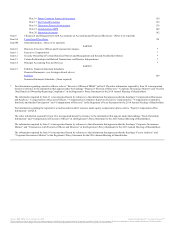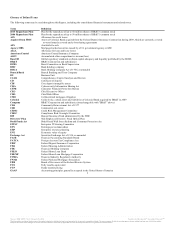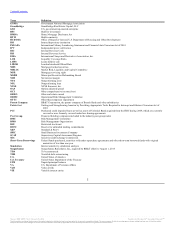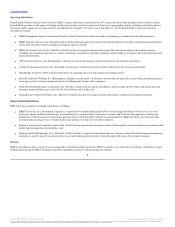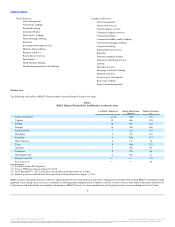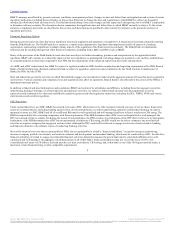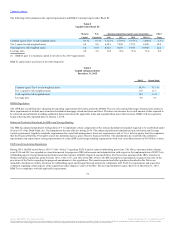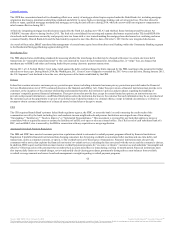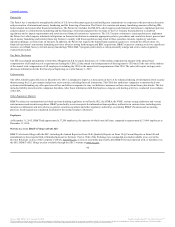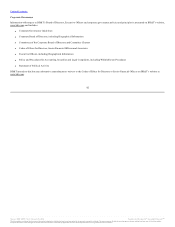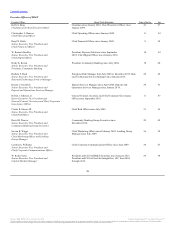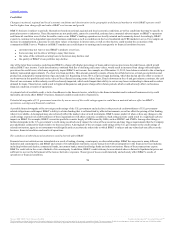BB&T 2015 Annual Report Download - page 13
Download and view the complete annual report
Please find page 13 of the 2015 BB&T annual report below. You can navigate through the pages in the report by either clicking on the pages listed below, or by using the keyword search tool below to find specific information within the annual report.
TableofContents
Current federal law authorizes interstate acquisitions of banks and BHCs without geographic limitation, and a bank headquartered in one state is authorized
to merge with a bank headquartered in another state, subject to market share limitations and any state requirement that the target bank shall have been in
existence and operating for a minimum period of time. After a bank has established branches in a state through an interstate merger transaction, the bank may
establish and acquire additional branches at any location in the state where a bank headquartered in that state could have established or acquired branches
under applicable federal or state law. These regulatory considerations are applicable to privately negotiated acquisition transactions.
FRB rules prohibit a financial company from combining with another company if the ratio of the resulting company's liabilities exceeds 10 percent of the
aggregate consolidated liabilities of all financial companies.
Other Safety and Soundness Regulations
The FRB has enforcement powers over BHCs and their nonbanking subsidiaries. The FRB has authority to prohibit activities that represent unsafe or
unsound practices or constitute violations of law, rule, regulation, administrative order or written agreement with a federal regulator. These powers may be
exercised through the issuance of cease and desist orders, civil money penalties or other actions.
There also are a number of obligations and restrictions imposed on BHCs and their depository institution subsidiaries by federal law and regulatory policy
that are designed to reduce potential loss exposure to the depositors of such depository institutions and to the FDIC insurance fund in the event the
depository institution is insolvent or is in danger of becoming insolvent. For example, under requirements of the FRB with respect to BHC operations, a BHC
is required to serve as a source of financial strength to its subsidiary depository institutions and to commit financial resources to support such institutions in
circumstances where it might not do so otherwise. In addition, the “cross-guarantee” provisions of federal law require IDIs under common control to
reimburse the FDIC for any loss suffered or reasonably anticipated by the DIF as a result of the insolvency of commonly controlled IDIs or for any assistance
provided by the FDIC to commonly controlled IDIs in danger of failure. The FDIC’s claim for reimbursement under the cross-guarantee provisions is superior
to claims of shareholders of the IDI or its holding company but is subordinate to claims of depositors, secured creditors and nonaffiliated holders of
subordinated debt of the commonly controlled IDI.
Federal and state banking regulators also have broad enforcement powers over Branch Bank, including the power to impose fines and other civil and criminal
penalties, and to appoint a receiver in order to conserve the assets of Branch Bank for the benefit of depositors and other creditors. The North Carolina
Commissioner of Banks also has the authority to take possession of a North Carolina state bank in certain circumstances, including, among other things,
when it appears that such bank has violated its charter or any applicable laws, is conducting its business in an unauthorized or unsafe manner, is in an unsafe
or unsound condition to transact its business or has an impairment of its capital stock.
Payment of Dividends; Capital Requirements
The Parent Company is a legal entity separate and distinct from Branch Bank and its subsidiaries. The majority of the Parent Company’s revenue is from
dividends paid by Branch Bank. Branch Bank is subject to laws and regulations that limit the amount of dividends it can pay. In addition, BB&T and Branch
Bank are subject to various regulatory restrictions relating to the payment of dividends, including requirements to maintain capital at or above regulatory
minimums, and to remain “well-capitalized” under the prompt corrective action regulations summarized elsewhere in this section. Federal banking regulators
have indicated that banking organizations should generally pay dividends only if (1) the organization’s net income available to common shareholders over
the past year has been sufficient to fully fund the dividends and (2) the prospective rate of earnings retention appears consistent with the organization’s
capital needs, asset quality and overall financial condition. BB&T’s future capital actions will depend on the FRB’s review of BB&T’s annual capital plans.
North Carolina law states that, provided a bank does not make distributions that reduce its capital below its applicable required capital, the board of directors
of a bank chartered under the laws of North Carolina may declare such distributions as the directors deem proper.
The federal banking agencies are required to take “prompt corrective action” in respect of IDIs and their BHCs that do not meet minimum capital
requirements. The law establishes five capital categories for this purpose: “well-capitalized,” “adequately capitalized,” “undercapitalized,” “significantly
undercapitalized” and “critically undercapitalized.” To be considered “well-capitalized” under these standards, an IDI must maintain the ratios shown above
and must not be subject to any order or written directive to meet and maintain a specific capital level for any capital measure.
9
Source: BB&T CORP, 10-K, February 25, 2016 Powered by Morningstar® Document Research℠
The information contained herein may not be copied, adapted or distributed and is not warranted to be accurate, complete or timely. The user assumes all risks for any damages or losses arising from any use of this information,
except to the extent such damages or losses cannot be limited or excluded by applicable law. Past financial performance is no guarantee of future results.



